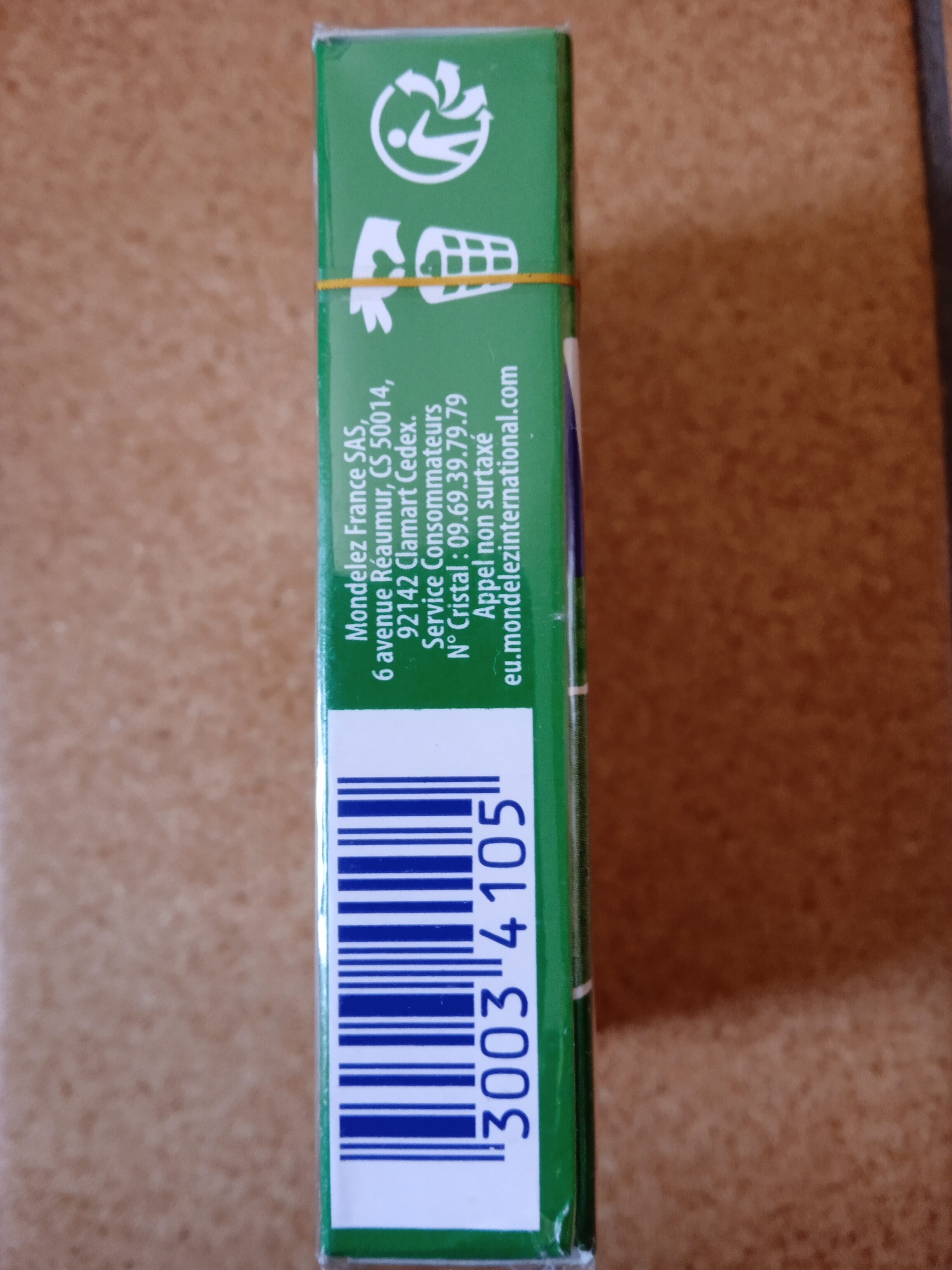Chewing gum - chlorophylle - Hollywood - 28 g - 20 dragées
This product page is not complete. You can help to complete it by editing it and adding more data from the photos we have, or by taking more photos using the app for Android or iPhone/iPad. Thank you!
×
Barcode: 30034105
Common name: Chewing-gum parfum menthe verte
Quantity: 28 g - 20 dragées
Brands: Hollywood
Categories: Snacks, Sweet snacks, Confectioneries, Chewing gum
Link to the product page on the official site of the producer: https://eu.mondelezinternational.com/bra...
Stores: Coccinelle
Countries where sold: France
Matching with your preferences
Report a problem
Data sources
Product added on by gyrostat
Last edit of product page on by yargil.
Product page also edited by autorotate-bot, bessheron, inf, kiliweb, manu1400, openfoodfacts-contributors, packbot, yuka.FaFAJNKSQewIJ8HQ0t8thRuLDurtGKRGHVUgog, yuka.SEtSZVNvYzRwZmRWaGZRajFBdUw4UHdreXNlREJVU3hDOVJOSUE9PQ, yuka.U1BBSFFJOWZpTXNYc2NVUjFScjQzTmNyNDdUNVJuMk9LT1ZLSVE9PQ, yuka.VDc0OUg2MGZoT0k0aFBRVHdrNkUydjF0bWJtUlptWHNJZUE0SUE9PQ, yuka.VFA0aVA2VVFpZWNzeFBjaXB4UCtvNE5jNnJpMVdseTNldHRMSVE9PQ, yuka.VFBnS1Q2MHRwOVpiZ2ZBSDJ4bVAzOEpueTVYM1pXcVVPYkFNSWc9PQ, yuka.WDc0S1A0c251OUFwcHZGajVSL0g1Tlo1eU1HUmREcXJCTTVLSVE9PQ, yuka.WVBzdk81NG5xOThVcThWZ295L04wZk5senBxeFpFTzlGY1krSUE9PQ, yuka.WVlCWkNhZGZtZElqcFAxbTBTMks0dTUrMzV1WlIwR1BJcmNQSWc9PQ, yuka.Wi84OU1wUXR2dE00bFBZbXpFL0ovKzVFNVlLU2NEbVVLcm92SVE9PQ, yuka.YS9CWlNhazVsdlVNb3ZNczBTbU55TmQzNjVPcFVGaUhMUEk5SUE9PQ, yuka.YjZRZVA3UVluL2d3eE5nNDhDTDZvODlQL1kyZ0JWMlhjYlFkSVE9PQ, yuka.YllrSEFZNEwvZGtCZzhFVi9EL3d5T3RNL0lPT2JIdnVDZFZQSVE9PQ, yuka.ZHI4U0M3b1lndGdUcWZRRHdVbUoyK2dsL3BQNUJUcWNFZWhMSUE9PQ, yuka.ZjRBZk5xYzduTmhSbGZRYW9rcUtxL0puL00rUVEzSHZJdXNKSVE9PQ, yuka.ZklFc0FvQUQ5c0pYbk04cytCM3E2LzlJLzhlSlEwT2xGZkl0SVE9PQ, yuka.ZllZUE1JUXRwdWd1a2ZRbjhTalZ3dFp1bk1TUVoxMlhldm9RSVE9PQ, yuka.sY2b0xO6T85zoF3NwEKvllRobvrguj_GahDmlUCtzPKCEL25c9h4-qTTL6s.












